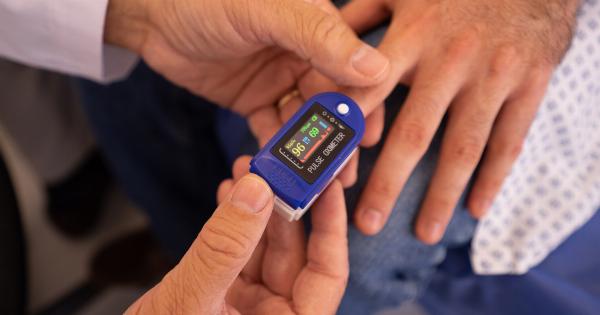In recent years, the field of cardiology has witnessed a remarkable breakthrough with the emergence of implantable artificial hearts.
These innovative devices have the potential to eliminate the chronic shortage of donor hearts for transplantation, revolutionizing the treatment of end-stage heart failure. With advancements in technology and ongoing research, artificial hearts are expected to play a pivotal role in saving countless lives and improving patients’ quality of life.
Understanding Heart Failure
Heart failure is a debilitating condition that occurs when the heart’s ability to pump blood adequately diminishes. It can result from various underlying causes such as coronary artery disease, hypertension, or previous heart attacks.
Unfortunately, heart failure affects millions of individuals worldwide, representing a significant burden on healthcare systems.
The Challenge of Donor Shortages
For individuals with end-stage heart failure, heart transplantation is often the only viable treatment option.
However, the demand for donor hearts far exceeds the supply, leading to long waiting lists and a high mortality rate among those awaiting transplantation. According to the American Heart Association, only about 3,500 heart transplants are performed each year in the United States, while over 6 million Americans suffer from heart failure.
This gap between supply and demand highlights the urgent need for alternative solutions.
Introducing Implantable Artificial Hearts
Implantable artificial hearts are mechanical devices designed to replace the function of a failing human heart.
These devices, also known as ventricular assist devices (VADs), are implanted within the patient’s chest cavity and connected to the native heart and blood vessels. Artificial hearts can either partially support heart function or completely replace it, depending on the severity of the patient’s condition.
Types of Artificial Hearts
There are currently two primary types of implantable artificial hearts in use:.
1. Total Artificial Hearts (TAH)
Total Artificial Hearts are complete replacements for the natural heart. They consist of two ventricles, a left and a right, which pump blood throughout the body.
The TAH is connected to the patient’s remaining atria and major blood vessels, providing a continuous flow of blood. This type of artificial heart is typically used as a bridge to transplantation, supporting the patient until a suitable donor heart becomes available.
2. Ventricular Assist Devices (VAD)
Ventricular Assist Devices are smaller, more portable devices that assist the weakened heart in its pumping function.
VADs are often used as a long-term solution for patients who are not eligible for heart transplantation or as a temporary measure while awaiting a transplant. These devices can be implanted alongside the native heart or externally connected and worn outside the body with a portable power source.
Benefits of Implantable Artificial Hearts
The emergence of implantable artificial hearts brings several advantages:.
1. Increased Availability
The use of artificial hearts eliminates the dependency on donor organs, significantly increasing the availability of life-saving treatment for end-stage heart failure patients.
This reduction in demand for donor hearts may lead to a decline in waitlist times and reduced mortality rates among those awaiting transplantation.
2. Enhanced Quality of Life
Implantable artificial hearts provide patients with improved quality of life compared to traditional therapies for heart failure, such as continuous intravenous medications or external heart pumps.
Artificial hearts offer patients increased mobility and independence, allowing them to engage in daily activities and lead more fulfilling lives.
3. Bridge to Transplantation
For patients awaiting heart transplantation, artificial hearts act as a bridge, providing mechanical support until a suitable donor heart becomes available.
This technology ensures patients remain stable and viable candidates while awaiting a transplant, reducing the risk of further heart-related complications.
Challenges and Future Directions
While implantable artificial hearts offer significant breakthroughs, several challenges remain:.
1. Device Size and Implantation Procedures
One of the key challenges in artificial heart technology is miniaturization, making the devices smaller and easier to implant.
Advances in engineering and material sciences are crucial to developing smaller artificial hearts that can accommodate a wider range of patients and reduce the potential for complications during implantation procedures.
2. Battery Life and Power Sources
Implantable artificial hearts rely on batteries or external power sources to operate. Extending battery life and developing efficient power sources are essential areas of improvement to increase the long-term viability of these devices.
Researchers are exploring options such as wireless charging and energy-harvesting mechanisms to address these challenges.
3. Biocompatibility and Longevity
As artificial hearts come into direct contact with the patient’s blood, ensuring biocompatibility is critical to prevent blood clot formation and infections.
Additionally, enhancing the longevity and durability of artificial hearts is vital for long-term patient outcomes. Ongoing research focuses on developing biocompatible materials and improving device reliability.
Conclusion
The advent of implantable artificial hearts represents a significant milestone in addressing the worldwide shortage of donor hearts for transplantation.
These devices offer hope to millions of individuals suffering from end-stage heart failure, providing a life-sustaining treatment option and improving their overall quality of life. As research and technological advancements continue, implantable artificial hearts are poised to become an integral part of cardiology, transforming the landscape of heart failure management.
























